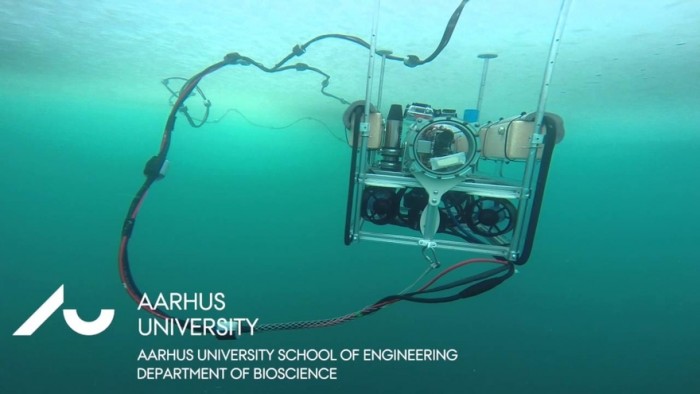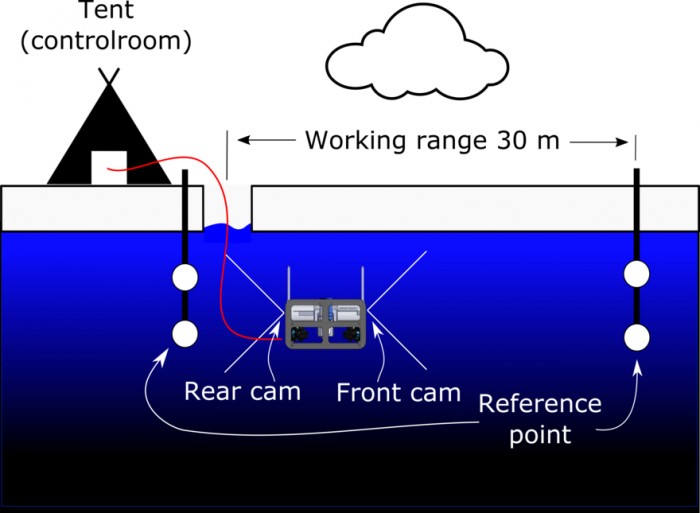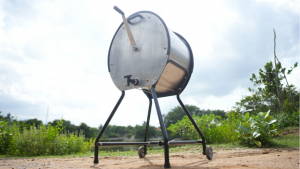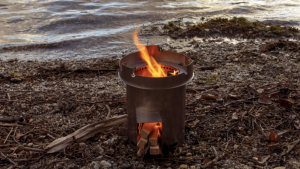
Ice algae are an effective consumer of CO2 and the main food source within the Arctic Ocean. In the past, examining this alga was a laborious process, one that involved drilling blocks of ice. A couple of students from Aarhus University in Denmark have designed a device to further this research and expand our understanding of the Arctic environment in a simpler manner: the DeepFreezeROV.
Most ROVs (remotely operated vehicles) that are commercially available for this kind of process are often either too expensive or simply unable to navigate the harsh environment of the Arctic. Aarhus University students Thomas Juul and Tor Eskildsen decided to focus on developing a short-range model that would be able to successfully manoeuvre and navigate beneath the fjord ice of Greenland.
The DeepFreezeROV is lightweight, highly maneuverable and specifically designed for under-ice deployment in Greenland. Powered by myRIO – an embedded hardware device that allows students to design real, complex engineering systems quickly and affordably – this unique aquatic inspection robot uses four vector thrusters for precise and stable movement, and two thrusters to maintain the desired depth.
A unique video-based positioning system allows for the ROVs easy navigation with respect to two reference points. Using two cameras – one looking forward and one back – images are captured that make it possible to compare algae growth with conditions underneath and above the ice.
Selected as a finalist for this year’s Northern European Student Design Contest, the information acquired from the DeepeFreezeROV’s maiden voyage can be used for computing global CO2 models and sustainable fishing quotas. Its creators hope it will inspire further development of Aquatic ROV’s to better understand our largely unexplored oceans.







